Wrappers
Playing cards were traditionally sold inside paper wrappers, which were usually thrown away.
Cardmakers traditionally sold their playing cards inside outer wrappers made of paper. These would usually be discarded once opened and were not expected to be kept. However, some survive, often in a fragile condition, and these paper wrappers are an useful additional source of information, such as manufacturers’ addresses, trade marks or copyright notices, medals won at exhibitions, as well as in certain cases, taxation details or royal patronage. See example here►
For this reason, packs still in their original paper wrapper, unopened, are less common. Today’s packs are usually cello-wrapped.
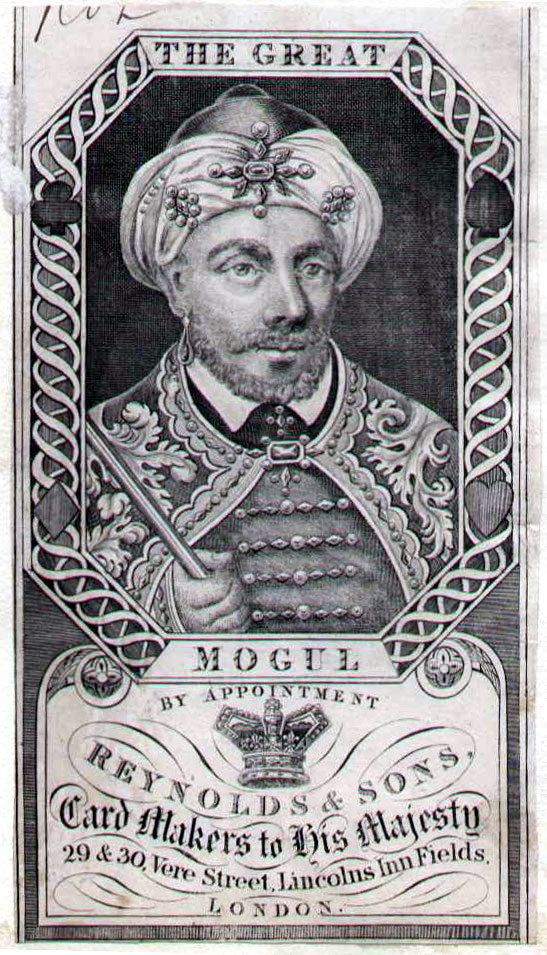
Left & below: cut out wrapper fronts advertising "THE GREAT MOGUL" (c.1830) and "Superior Club House" playing cards (c.1870s) by Reynolds and Sons, 29 & 30 Vere Street, Lincoln's Inn Fields, London. Images courtesy John Sings.
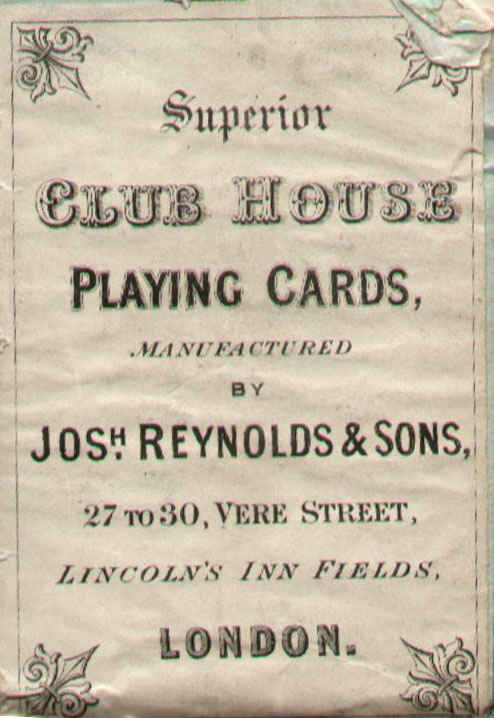

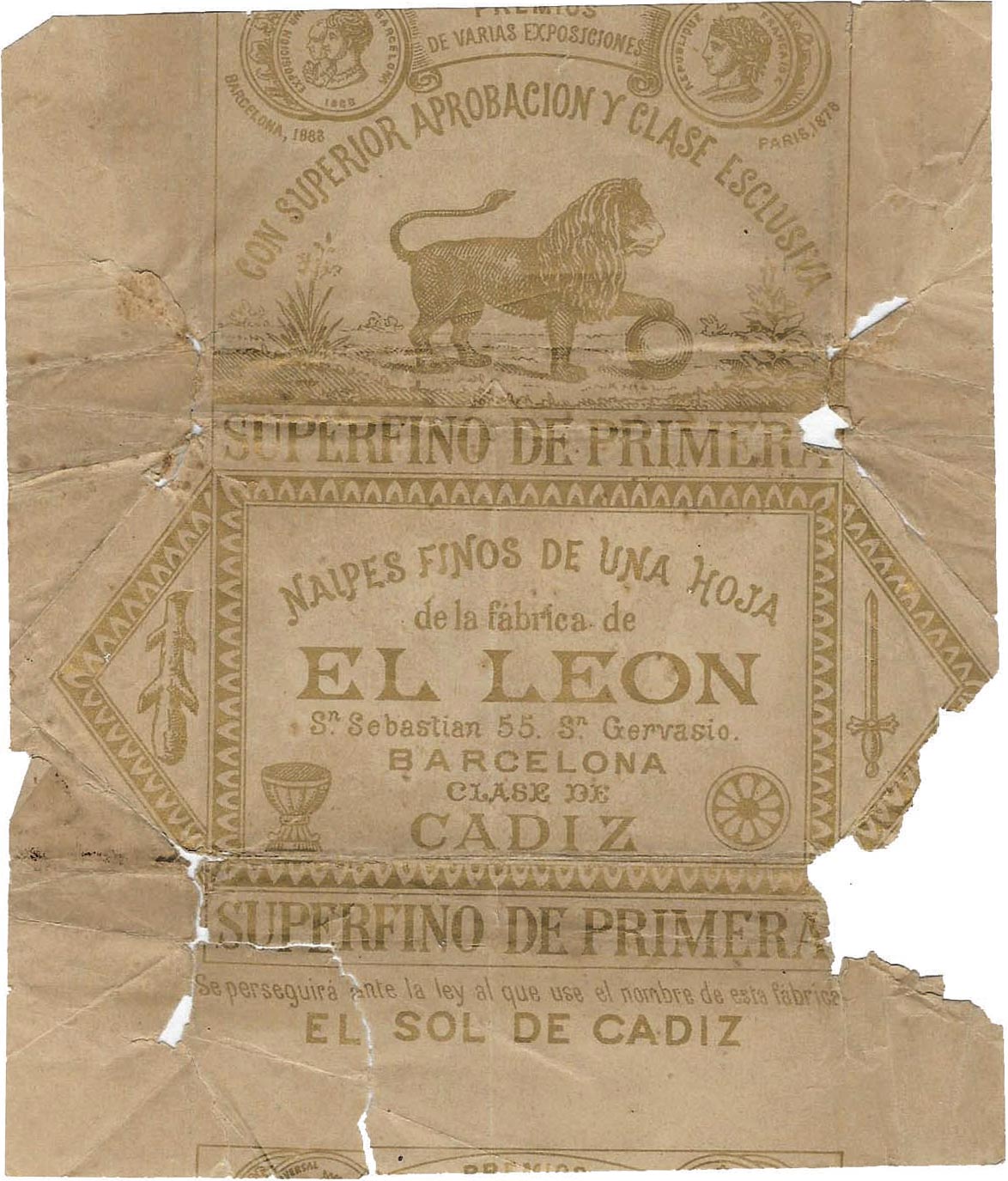
Above: the wrapper from Naipes ‘El Leon’, Barcelona, 1897. Courtesy Alberto Pérez.
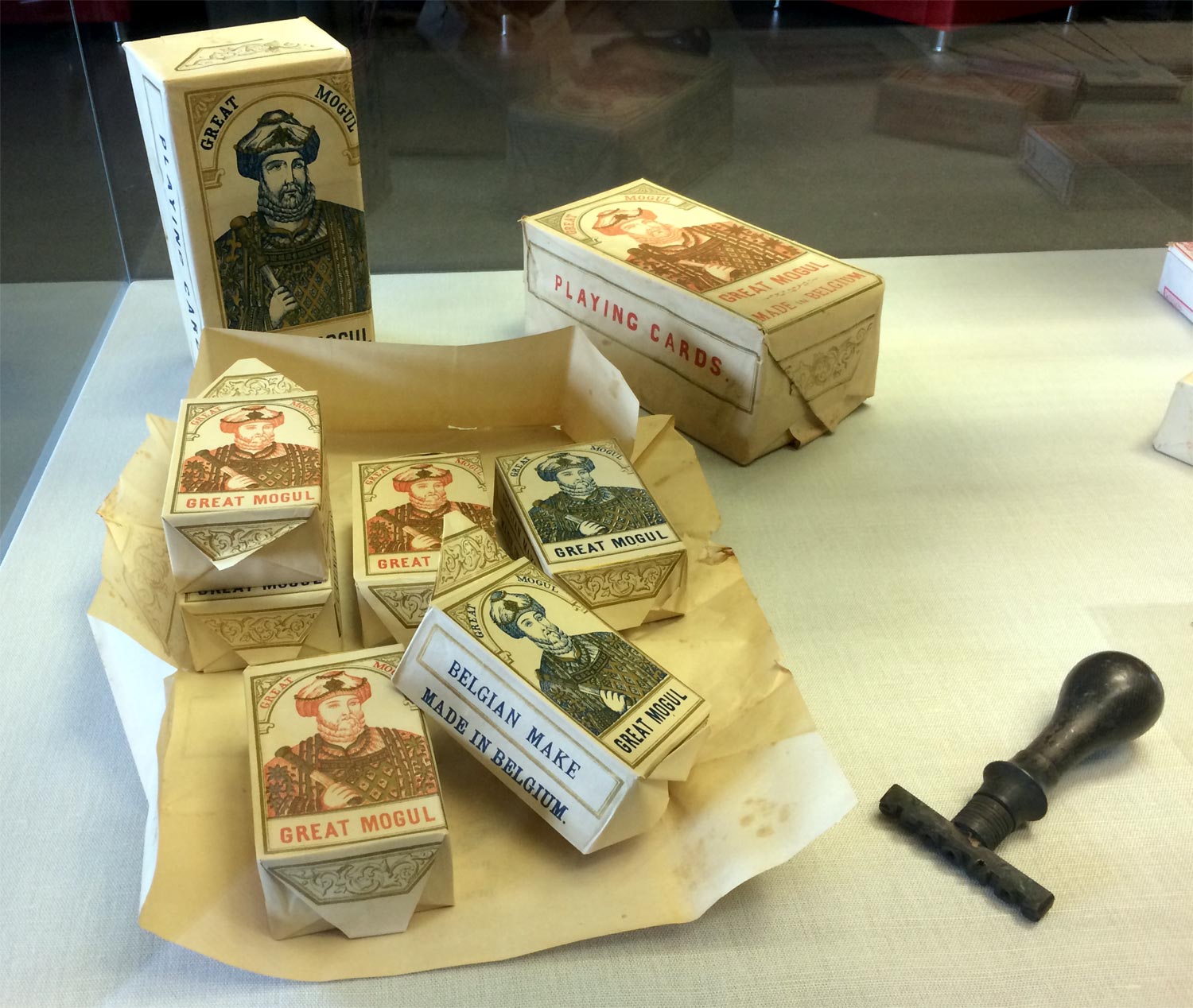
Above: unopened 'Great Mogul' playing cards manufactured by A. van Genechten.
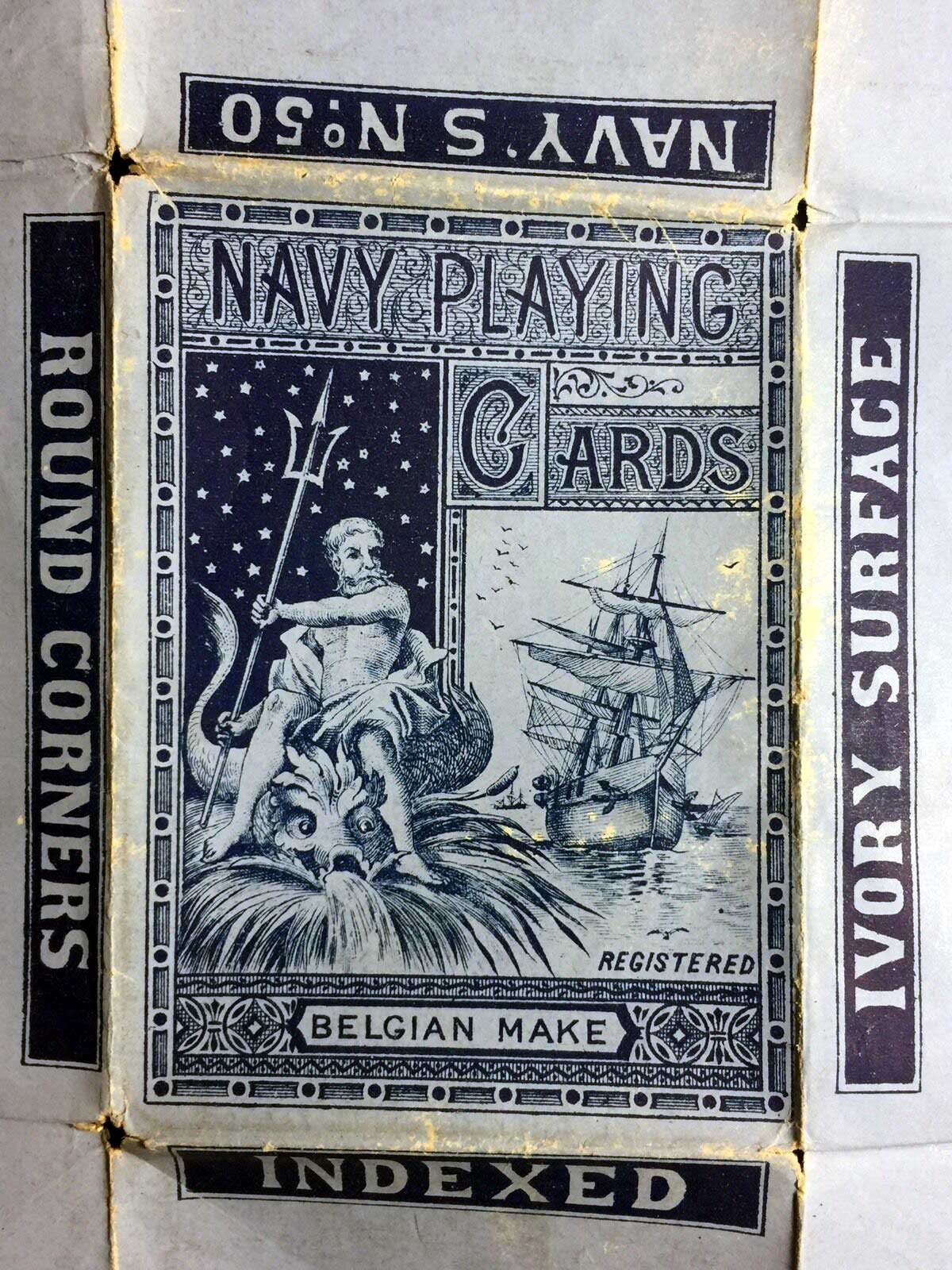
Above: wrapper from 'Navys No.50' playing cards manufactured by A. van Genechten, c.1910.
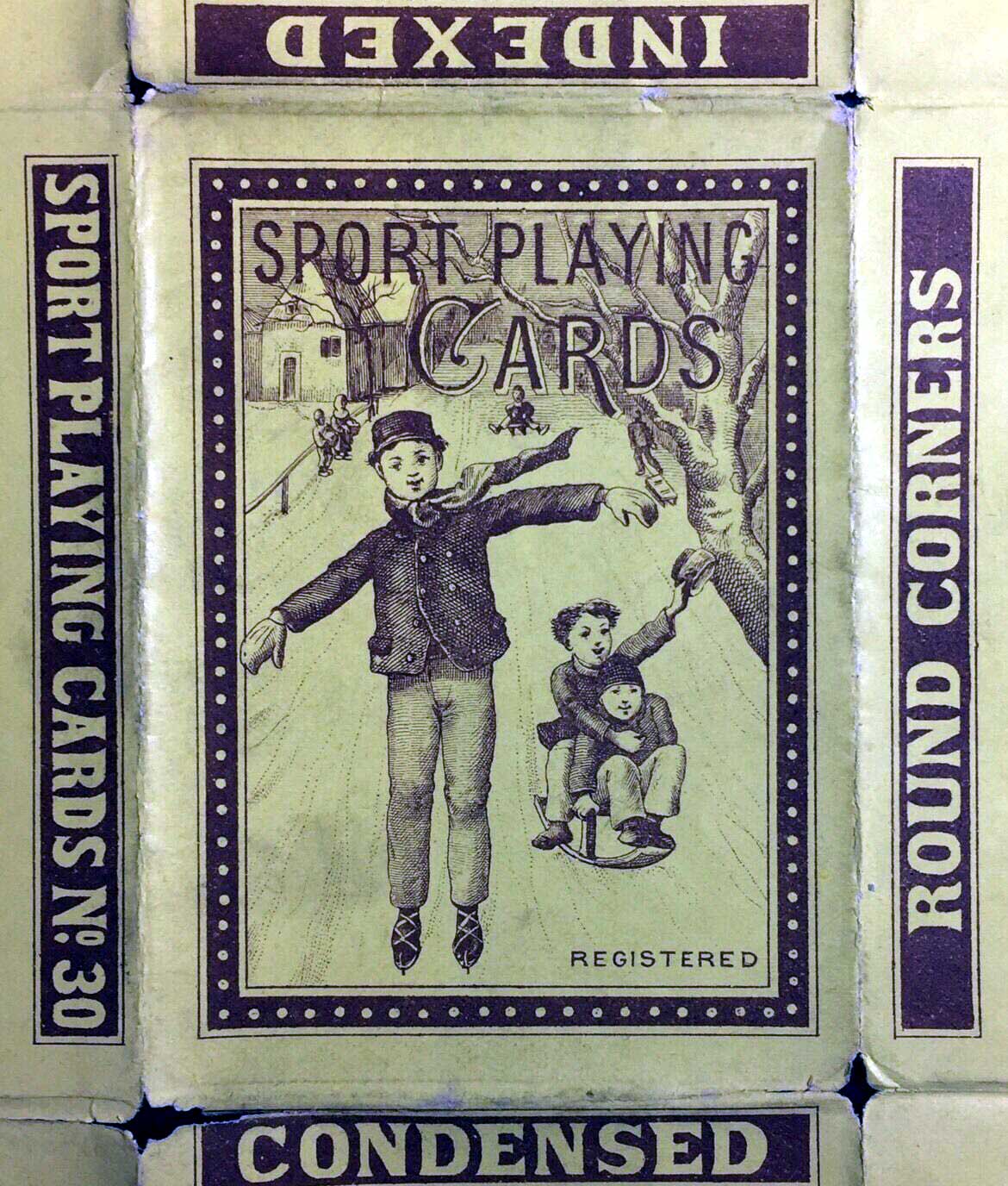
Above: wrapper from 'Sport No.31' playing cards manufactured by A. van Genechten, c.1910.
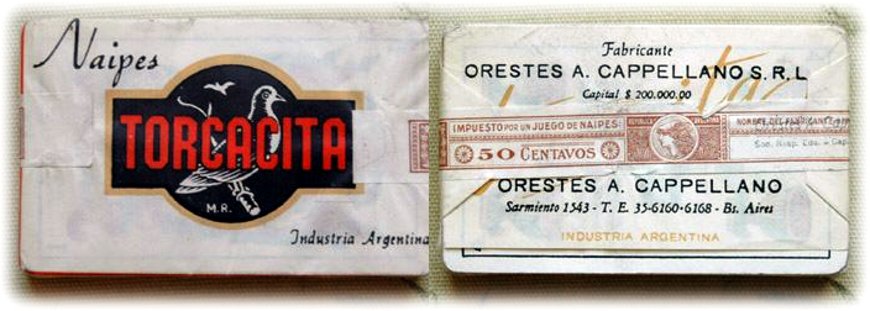
Above: Torcacita playing cards in their original wrapper, sealed with the Internal Revenues tax band, c.1945.
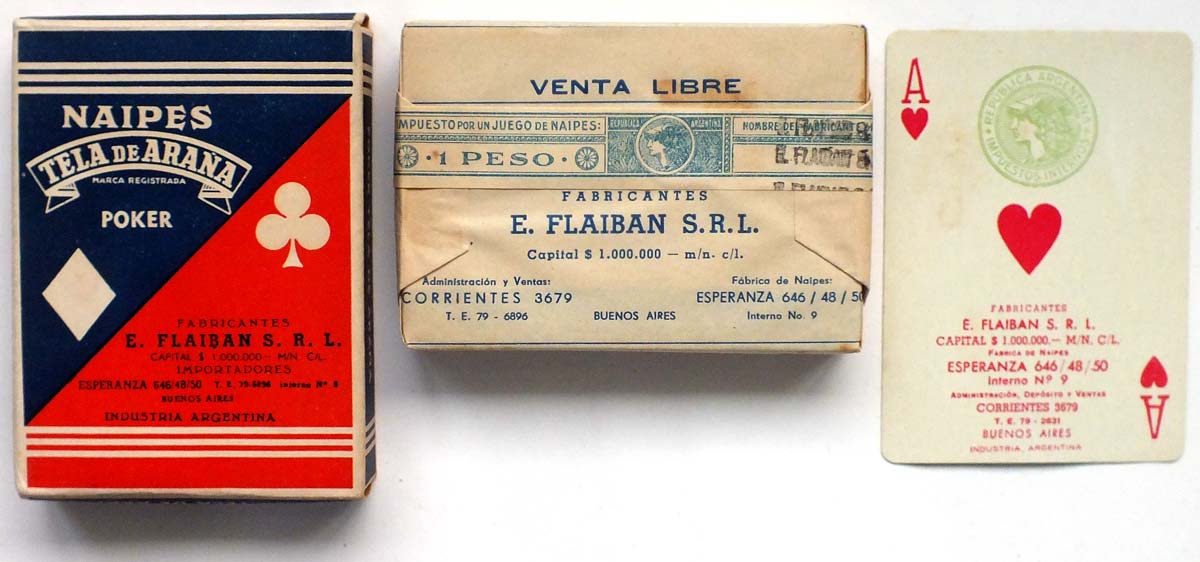
Above: Poker Tela de Araña manufactured by Flaiban S.R.L., Bs Aires in c.1949 with blue 1 Peso tax band around the unopened deck. The ace of hearts shows the tax stamp.
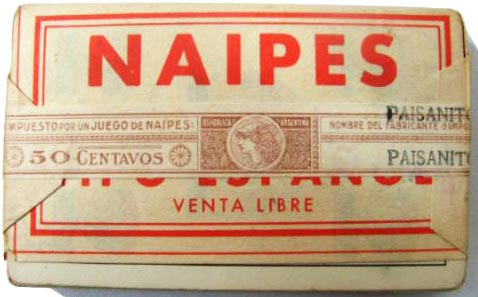
Above: wrapper and 50 Centavos tax band from pack manufactured by Paisanito S.R.L. c.1952-3.
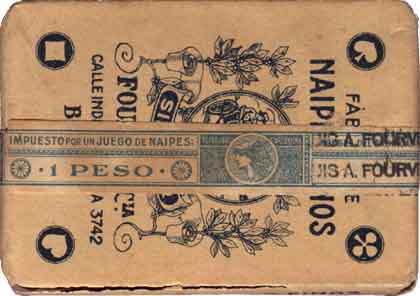
Above: Naipes Side Car manufactured by Luis A. Fourvel y Cía, Buenos Aires, c.1950.
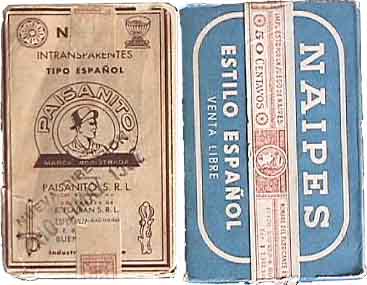
Above: Naipes Paisanito, c.1953.
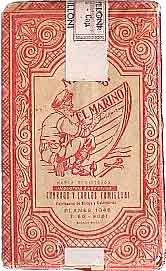
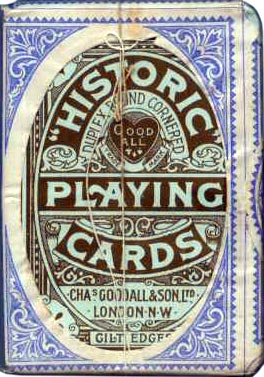
Above: Goodall’s “Historic” Playing Cards, c.1893.
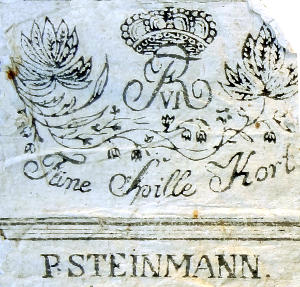
Above: detail from the wrapper manufactured by P. Steinmann, Copenhagen, c.1810-20 showing the Royal Monogram of King Frederik V.
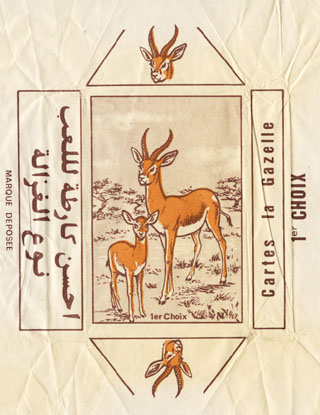
Above: wrapper from Cartes La Gazelle, manufactured by Imprimerie de L’Entente, Casablanca.
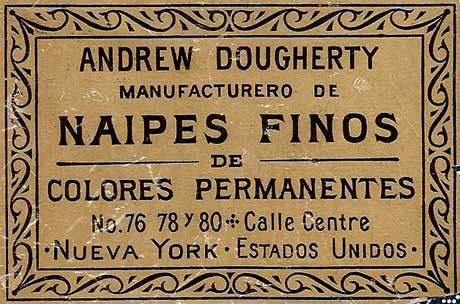
Above: detail from wrapper manufactured by Andrew Dougherty for Spanish suited cards with his Centre Street address, c.1882.
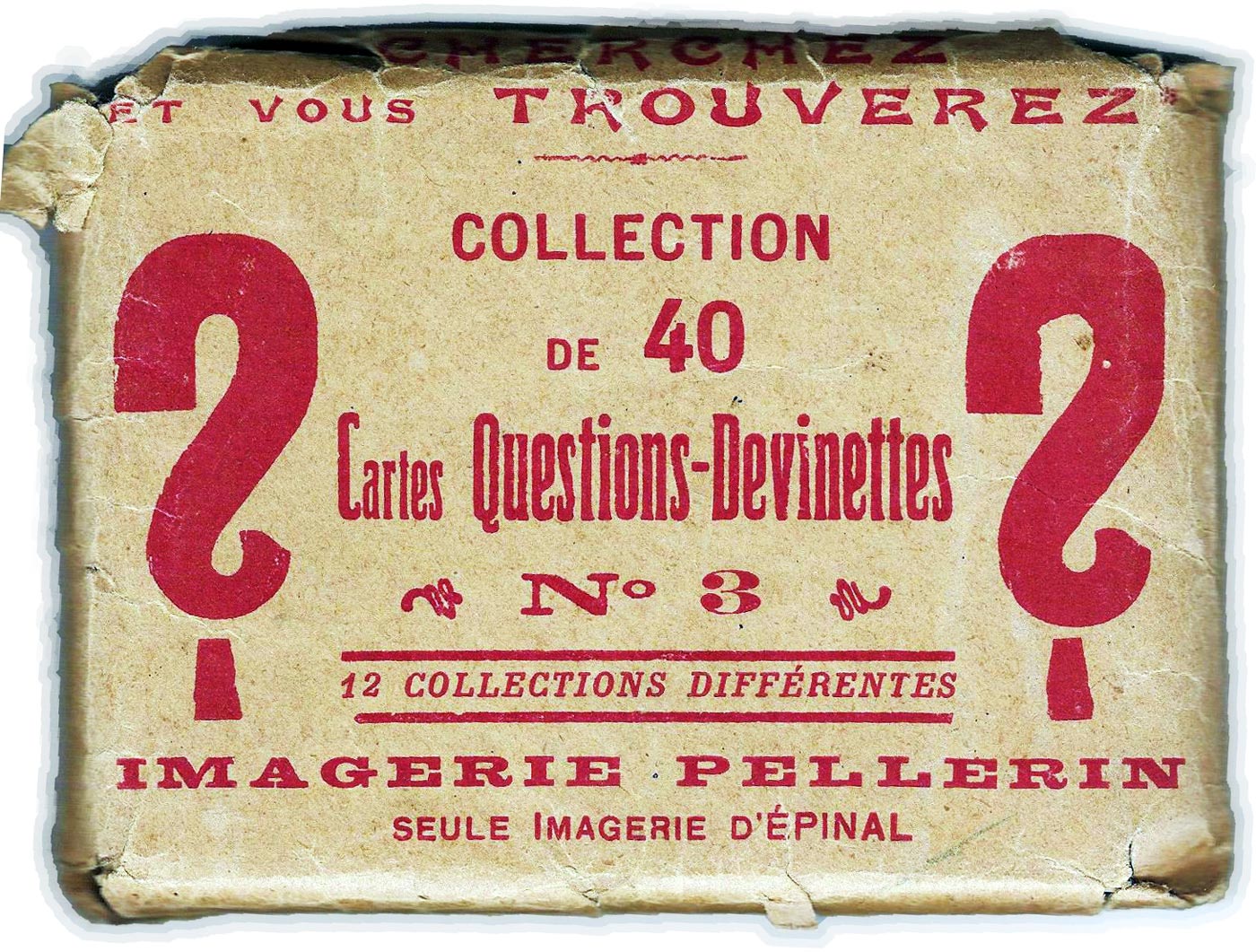
Above: wrapper from “Questions & Answers” family game produced by Imagerie Pellerin, c.1840.
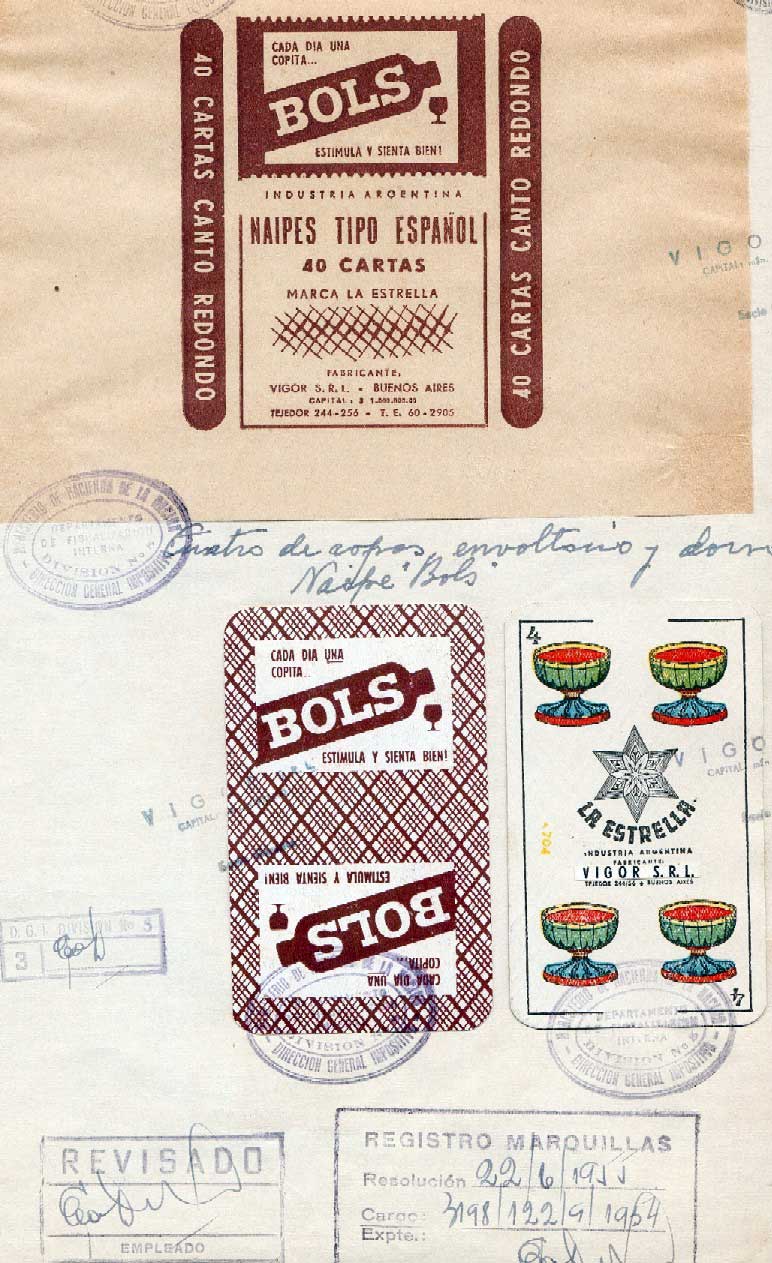
Above: the registration document for "Naipes Bols" including a sample wrapper, Bs Aires, 1955.
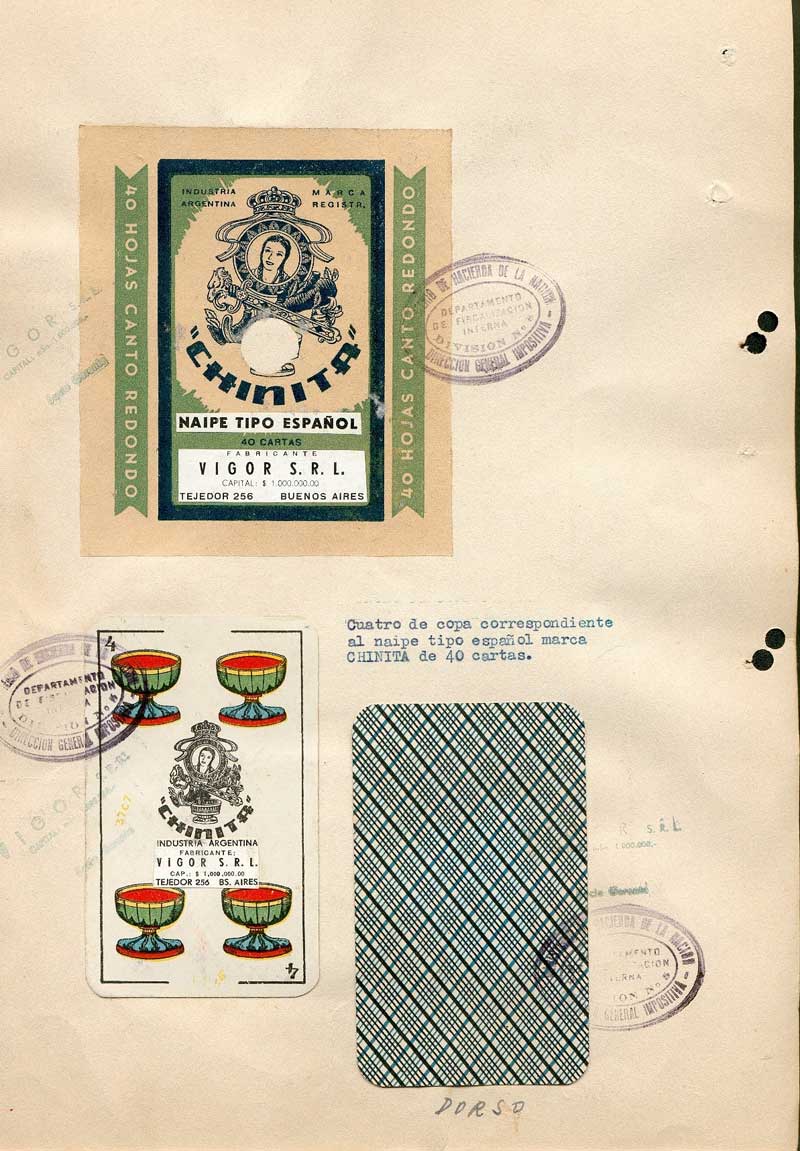
Above: the registration document for "Naipes Chinita" including a sample wrapper, Bs Aires, 1955.
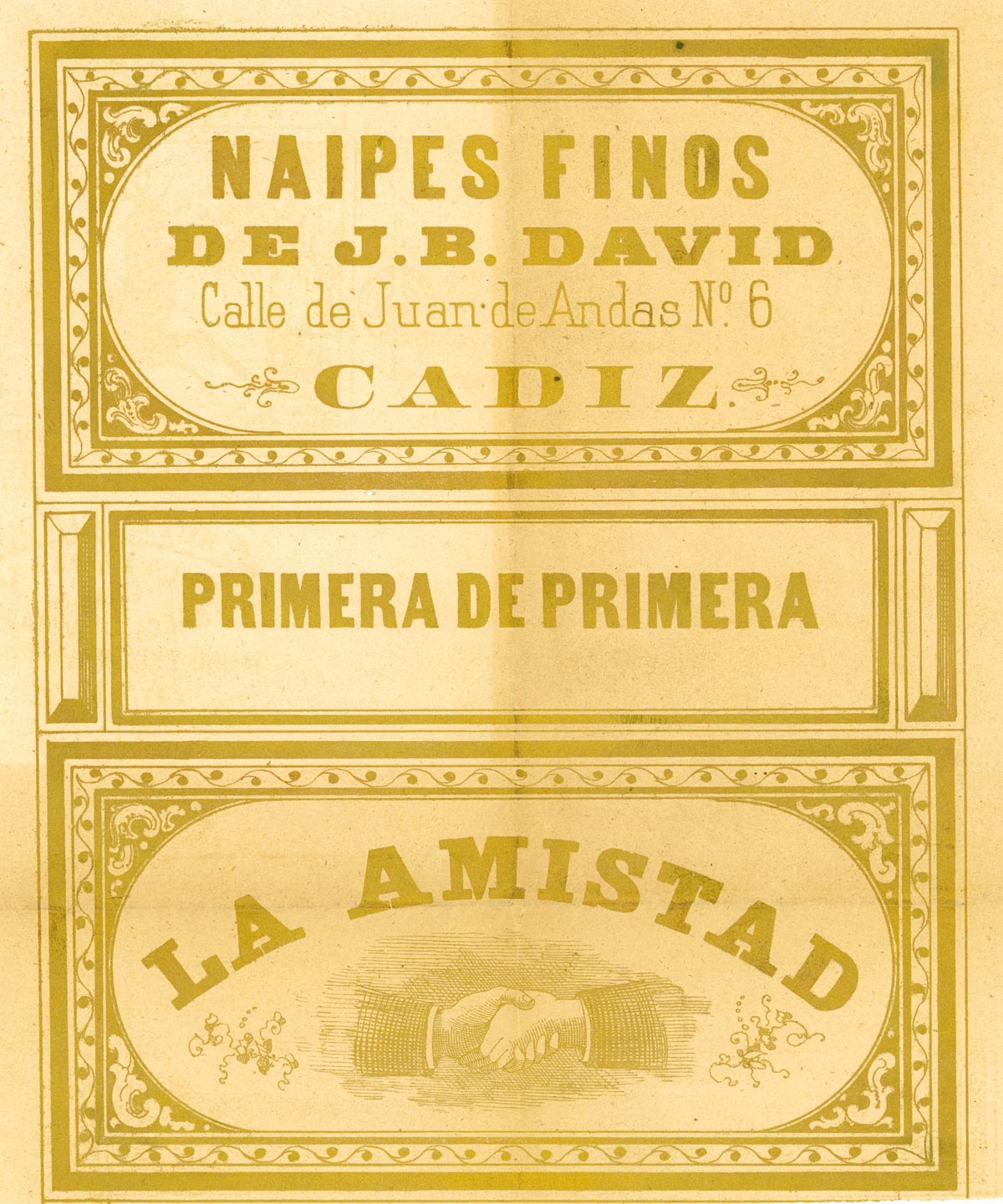
Above: wrapper from “La Amistad” deck produced by Wüst for J. B. David in Cadiz, Spain, c.1880. Courtesy Alberto Pérez González.
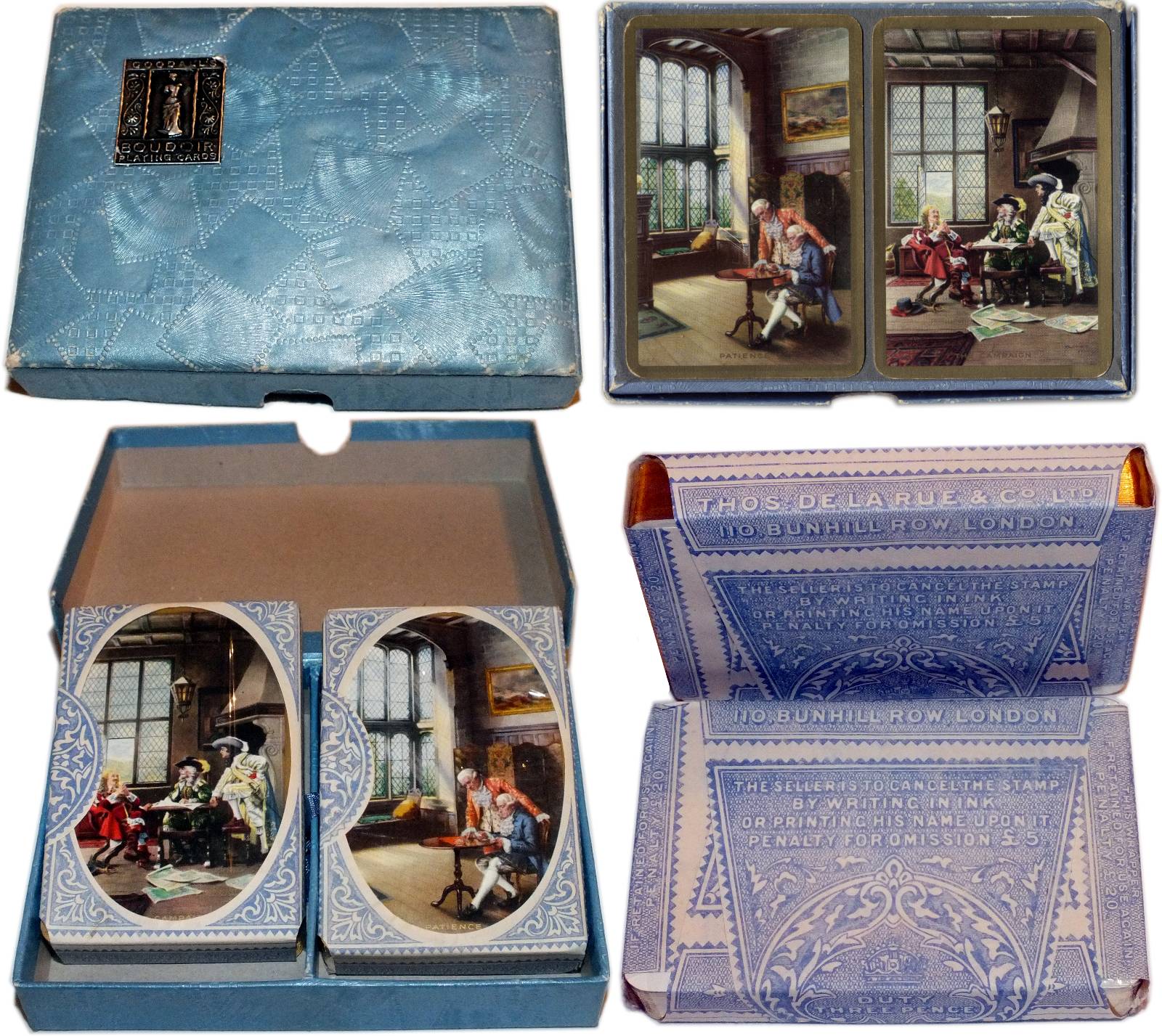
Above: double set of Goodall's “Boudoir” playing cards sealed in the original tax wrappers inside a padded box, c.1930.
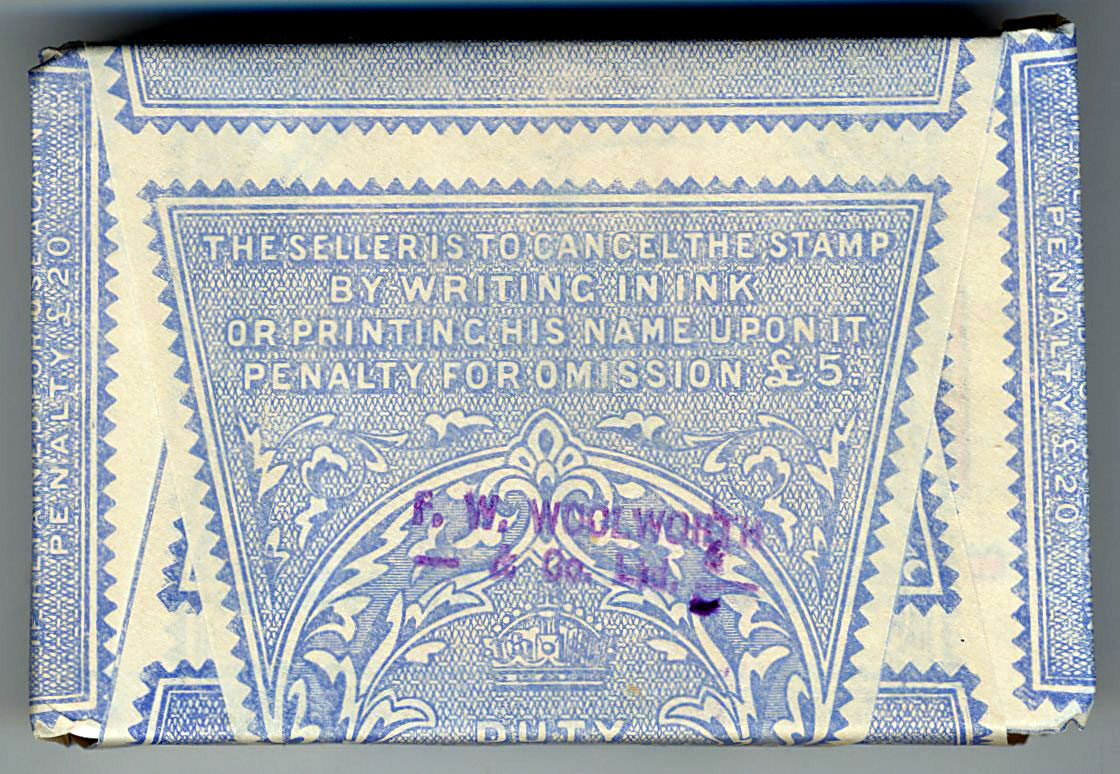
Above: unopened wrapper from the New Bond Fabric Finish Playing Cards made by the Universal Playing Card Co. Ltd., overprinted with the retailer’s stamp “FW Woolworth & Co Ltd”, c.1950s

By Simon Wintle
Member since February 01, 1996
I am the founder of The World of Playing Cards (est. 1996), a website dedicated to the history, artistry and cultural significance of playing cards and tarot. Over the years I have researched various areas of the subject, acquired and traded collections and contributed as a committee member of the IPCS and graphics editor of The Playing-Card journal. Having lived in Chile, England, Wales, and now Spain, these experiences have shaped my work and passion for playing cards. Amongst my achievements is producing a limited-edition replica of a 17th-century English pack using woodblocks and stencils—a labour of love. Today, the World of Playing Cards is a global collaborative project, with my son Adam serving as the technical driving force behind its development. His innovative efforts have helped shape the site into the thriving hub it is today. You are warmly invited to become a contributor and share your enthusiasm.
Related Articles

The Molassine Company and its link to Whist and Bridge
A savvy marketing strategy blending Victorian decorative design with Edwardian practicality.

Ogdens Beauties & Military cigarette cards
Cigarette cards featuring beauties and military uniforms with playing-card insets.

Copechat Paramount Sorting System
Preserving the past: a specimen deck showcasing edge-notched cards and their ingenious sorting syste...

Love Tests
Vintage novelty “Love Test” cards of a slightly saucy nature but all in good fun!

Victorian grocer’s scale plate
Large flat plate decorated with highly coloured English cards and royal arms.

Moguls, Highlanders and Merry Andrews
Discover the historic origins and evolution of card naming and quality designations like ‘Moguls’ an...

English cards from the reign of Charles II
This article explores a historic pack of English playing cards from circa 1675, likely used by King ...

Portrait Playing Cards
Portrait playing cards, featuring realistic drawings of people on the court cards instead of traditi...

Feh Schnapskarten
Colourful promotional pack for Feh household and toilet papers.

Sylvanian Families mini playing cards
Miniature cards in sheet form with Sylvanian Families characters on the courts and Jokers.

Papyrus Playing Cards
Papyrus playing cards distributed by Egypt Trade, c.1996.

Linweave Tarot
The Linweave Tarot is actually an elaborate set of paper samples from the Pulp, Paper and Board Divi...

The making of a Bridge or Bézique marker
This post-mortem was carried out on a Bezique marker which was already falling apart.

Goodall 1879-1880 Sample Book
Complete contents of a sample book by Goodall & Sons

Card Game Items and contemporary advertisements
It is often difficult to identify the origin, manufacturer and date of a card game boxed set and oth...

Will’s Cigarettes and Auction Bridge
In 1926 Will’s issued a set of 25 cigarette cards on Auction Bridge, presenting a range of hands ill...
Most Popular
Our top articles from the past 28 days

